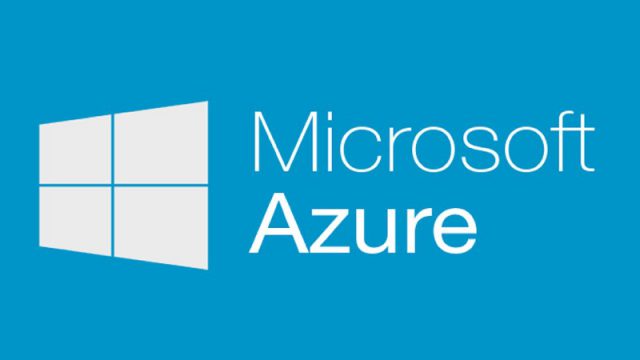What is Microsoft Azure? A Comprehensive Cloud Platform
Microsoft Azure is a leading cloud computing platform developed by technology giant Microsoft. It offers a wide range of services and solutions designed to cater to the diverse needs of businesses and organizations. Azure is renowned for its flexibility, scalability, and robust security features, making it an ideal choice for companies seeking to streamline their operations and enhance productivity.
Key Features and Services of Microsoft Azure
Microsoft Azure offers a wide array of features and services designed to cater to the unique needs of businesses and organizations. Among its most notable offerings are virtual machines, databases, AI, and machine learning capabilities. These components can help streamline operations, enhance productivity, and provide valuable insights for decision-making.
Virtual machines (VMs) are a crucial aspect of Azure’s infrastructure. They allow users to deploy and manage virtualized computing resources with ease. With a wide variety of operating systems and configurations available, businesses can quickly set up and scale their IT infrastructure according to their specific requirements.
Azure’s database services cater to various data management needs. From SQL databases to NoSQL databases like Cosmos DB, Azure offers a range of options to ensure optimal data storage and retrieval. Additionally, Azure’s AI and machine learning capabilities enable businesses to analyze vast amounts of data and derive actionable insights, ultimately driving growth and innovation.
By leveraging these features and services, businesses can create a customized, flexible, and scalable cloud environment that supports their unique needs and goals. Microsoft Azure’s robust offerings empower organizations to focus on their core operations while benefiting from the platform’s powerful capabilities.
How to Get Started with Microsoft Azure: A Step-by-Step Guide
Getting started with Microsoft Azure is a straightforward process. Follow these steps to set up your account, choose the right subscription, and configure your initial settings:
Step 1: Create a Microsoft Azure Account
Visit the Microsoft Azure website and click on the “Start free” button. You will be prompted to sign in with a Microsoft account or create a new one. Once you have signed in, provide the necessary information to create your Azure account.
Step 2: Choose the Right Subscription
Microsoft Azure offers various subscription options, including free and paid plans. Evaluate your needs and choose the subscription that best suits your requirements. Keep in mind that free accounts have certain limitations, while paid subscriptions provide access to additional features and services.
Step 3: Configure Initial Settings
After selecting a subscription, you will be directed to the Azure portal. Here, you can configure your initial settings, such as setting up your first virtual machine, creating a database, or configuring network security groups. Azure’s intuitive interface makes it easy to navigate and manage your resources.
To help you better understand the process, consider the following example:
Suppose you want to create a new virtual machine. In the Azure portal, navigate to the “Virtual machines” section and click on “Add.” Choose the operating system, VM size, and other relevant settings. Once you have configured your VM, click “Create” to deploy it. Your new virtual machine will be ready to use in a matter of minutes.
By following these steps, you can quickly set up your Microsoft Azure account and begin leveraging its powerful features and services to streamline your operations and enhance productivity.
Real-World Applications: Success Stories from Microsoft Azure Users
Microsoft Azure has empowered numerous businesses and organizations to achieve their goals and overcome challenges. Here, we share inspiring success stories from Azure users that highlight the platform’s potential to transform operations and drive growth.
Case Study 1: Streamlining Operations for a Manufacturing Giant
One of the world’s leading manufacturers faced difficulties managing its complex supply chain and production processes. By adopting Microsoft Azure, the company was able to leverage Azure’s AI and machine learning capabilities to analyze data, optimize production schedules, and reduce operational costs. As a result, the manufacturer experienced a significant increase in efficiency and productivity, enabling it to better serve its customers and stay ahead of the competition.
Case Study 2: Enhancing Customer Experiences for a Retail Powerhouse
A major retailer sought to improve its customer engagement and personalization efforts. By utilizing Microsoft Azure’s AI and machine learning tools, the retailer was able to analyze customer data, identify trends, and create tailored marketing campaigns. This strategy led to increased customer satisfaction, higher sales, and improved brand loyalty.
Case Study 3: Driving Innovation in the Healthcare Sector
A prominent healthcare provider leveraged Microsoft Azure to develop and deploy a cutting-edge telemedicine platform. This solution enabled the provider to offer remote consultations, monitor patient health in real-time, and improve overall patient care. By harnessing the power of Azure, the healthcare provider was not only able to enhance patient experiences but also pave the way for future innovations in the industry.
These success stories demonstrate the transformative potential of Microsoft Azure for businesses and organizations across various sectors. By leveraging Azure’s robust features and services, companies can streamline operations, enhance productivity, and drive growth, ultimately achieving their goals and overcoming challenges in an ever-evolving digital landscape.
Comparing Microsoft Azure to Other Cloud Platforms: Strengths and Weaknesses
When choosing a cloud platform, it’s essential to compare the unique selling points and potential drawbacks of each option. Here, we examine how Microsoft Azure stacks up against other popular cloud platforms, such as Amazon Web Services (AWS) and Google Cloud Platform (GCP).
Microsoft Azure vs. Amazon Web Services (AWS)
Both Azure and AWS offer a wide range of services and solutions for businesses and organizations. However, Azure’s seamless integration with Microsoft products and services, such as Office 365 and Power BI, can provide a significant advantage for companies already using these tools. Additionally, Azure’s user-friendly interface and intuitive navigation may make it a more accessible option for those new to cloud computing.
On the other hand, AWS has been a dominant player in the cloud market for many years and boasts a vast array of features and services. Companies with extensive experience in AWS may find it challenging to migrate to another platform due to the deep customization and unique architecture of AWS solutions.
Microsoft Azure vs. Google Cloud Platform (GCP)
Azure and GCP both provide robust AI and machine learning capabilities, making them suitable options for businesses looking to leverage data-driven insights. However, Azure’s extensive partnerships with industry leaders, such as SAP and Adobe, can offer additional value for companies seeking integrated solutions.
GCP, while offering a strong infrastructure and innovative services, may face limitations in terms of market share and third-party integrations compared to Azure and AWS. Nevertheless, GCP’s competitive pricing and focus on open-source technologies make it an attractive choice for startups and businesses with a strong open-source software (OSS) strategy.
By understanding the strengths and weaknesses of Microsoft Azure compared to other cloud platforms, businesses can make informed decisions about which solution best meets their unique needs and goals.
Security Best Practices for Microsoft Azure
Security is a top priority for businesses and organizations utilizing cloud platforms. Microsoft Azure offers several best practices and features to help users maintain a secure environment for their data and applications. Here are some practical security tips for Microsoft Azure users:
Implement Multi-Factor Authentication
Multi-factor authentication (MFA) adds an extra layer of security to user accounts by requiring a second form of verification, such as a text message or authenticator app code. Enabling MFA for all Azure users can significantly reduce the risk of unauthorized access.
Encrypt Data at Rest and in Transit
Data encryption ensures that sensitive information remains secure, whether it’s stored (at rest) or transmitted (in transit). Azure provides several encryption options, such as Azure Storage Service Encryption and Azure Disk Encryption, to help protect your data.
Establish Network Security Rules
Network security groups in Azure allow users to control inbound and outbound network traffic based on specific rules. By defining these rules, you can restrict access to your resources and minimize the attack surface.
Regularly Assess and Update Security
Security is not a one-time task but an ongoing process. Regularly assess your Azure environment for vulnerabilities and apply the latest security updates and patches. Azure Security Center can help you monitor and manage security across your resources.
By following these best practices and utilizing Azure’s built-in security features, you can significantly enhance the protection of your data and applications in the cloud.
Optimizing Costs: Strategies for Efficient Resource Management in Microsoft Azure
Managing costs and resources efficiently is crucial for businesses and organizations utilizing cloud platforms. Microsoft Azure offers several features and strategies to help users reduce expenses and improve return on investment (ROI). Here are some practical tips for optimizing costs in Microsoft Azure:
Reserved Instances
Reserved Instances allow users to reserve compute capacity in advance, providing discounts of up to 72% compared to pay-as-you-go prices. By committing to a one or three-year term, users can save significant amounts on their Azure expenditures.
Auto-Scaling
Azure’s auto-scaling feature enables users to automatically adjust the number of resources based on demand. By scaling resources up during peak usage and down during off-peak hours, businesses can minimize costs while maintaining optimal performance.
Budget Alerts
Setting up budget alerts in Azure can help users monitor and control their spending. By defining custom budget thresholds, users receive notifications when their spending approaches or exceeds their predefined limits, allowing them to take action and avoid unexpected costs.
Cost Management Tools
Azure’s cost management tools provide users with insights into their usage patterns, enabling them to identify areas for optimization. By analyzing historical data and forecasting future usage, businesses can make informed decisions about their resource allocation and cost structure.
By implementing these strategies and utilizing Azure’s cost optimization features, businesses can efficiently manage their resources and reduce expenses, ultimately improving their ROI in the cloud.
Staying Up-to-Date: Learning Resources and Community Support for Microsoft Azure
Staying current with the latest features, best practices, and trends in Microsoft Azure is essential for businesses and organizations looking to maximize their cloud investment. Here are some valuable resources and community support options to help you stay up-to-date with Azure:
Official Documentation
Microsoft provides comprehensive documentation covering all aspects of Azure, from getting started guides to in-depth technical references. Utilizing this resource can help you better understand Azure’s capabilities and ensure you’re following best practices.
Blogs
Microsoft’s official Azure blog (azure.microsoft.com/en-us/blog/) offers updates on new features, announcements, and industry insights. Additionally, numerous third-party blogs and websites provide valuable content and perspectives on Azure and related technologies.
Forums
Microsoft’s Azure community forums (social.msdn.microsoft.com/Forums/en-US/home) allow users to ask questions, share experiences, and learn from others. Engaging with the community can provide valuable insights and help you overcome challenges in your Azure journey.
Training Programs
Microsoft Learn (docs.microsoft.com/en-us/learn/) offers free, self-paced training courses on various Azure topics. Completing these courses can help you build your skills and gain certifications, demonstrating your expertise to clients and employers.
By leveraging these resources and engaging with the Azure community, you can stay informed, connected, and empowered to make the most of your Microsoft Azure experience.








